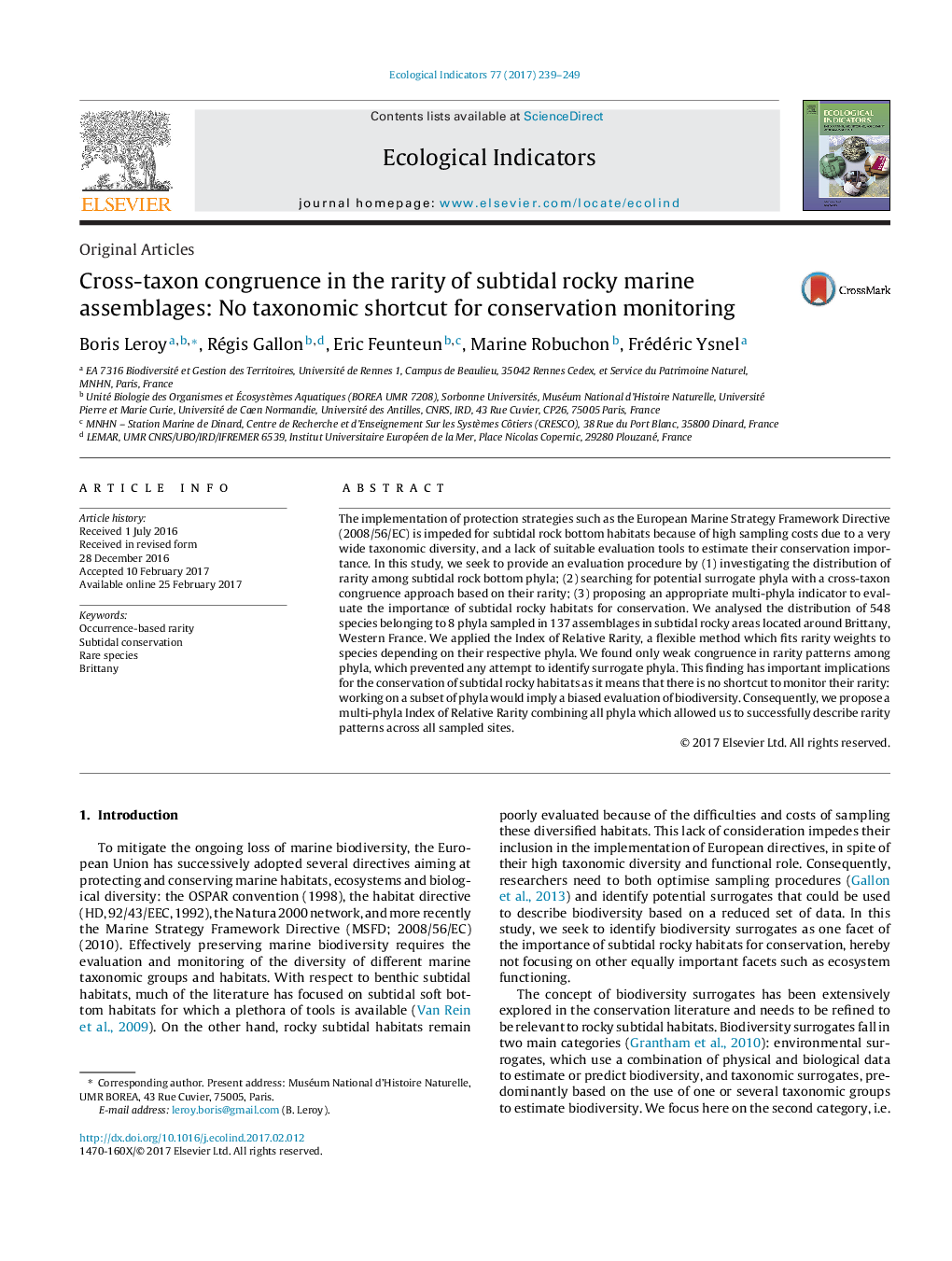| Article ID | Journal | Published Year | Pages | File Type |
|---|---|---|---|---|
| 5741727 | Ecological Indicators | 2017 | 11 Pages |
â¢Conservation importance of subtidal rocky habitats is assessed with rarity.â¢A flexible assemblage-level rarity metric is necessary to compare different phyla.â¢Discrepancy in cross-taxon congruence prevents the identification of surrogate phyla.â¢All phyla are therefore included in a multi-phylum index of rarity.â¢Rare assemblages are distributed across the whole study region.
The implementation of protection strategies such as the European Marine Strategy Framework Directive (2008/56/EC) is impeded for subtidal rock bottom habitats because of high sampling costs due to a very wide taxonomic diversity, and a lack of suitable evaluation tools to estimate their conservation importance. In this study, we seek to provide an evaluation procedure by (1) investigating the distribution of rarity among subtidal rock bottom phyla; (2) searching for potential surrogate phyla with a cross-taxon congruence approach based on their rarity; (3) proposing an appropriate multi-phyla indicator to evaluate the importance of subtidal rocky habitats for conservation. We analysed the distribution of 548 species belonging to 8 phyla sampled in 137 assemblages in subtidal rocky areas located around Brittany, Western France. We applied the Index of Relative Rarity, a flexible method which fits rarity weights to species depending on their respective phyla. We found only weak congruence in rarity patterns among phyla, which prevented any attempt to identify surrogate phyla. This finding has important implications for the conservation of subtidal rocky habitats as it means that there is no shortcut to monitor their rarity: working on a subset of phyla would imply a biased evaluation of biodiversity. Consequently, we propose a multi-phyla Index of Relative Rarity combining all phyla which allowed us to successfully describe rarity patterns across all sampled sites.
